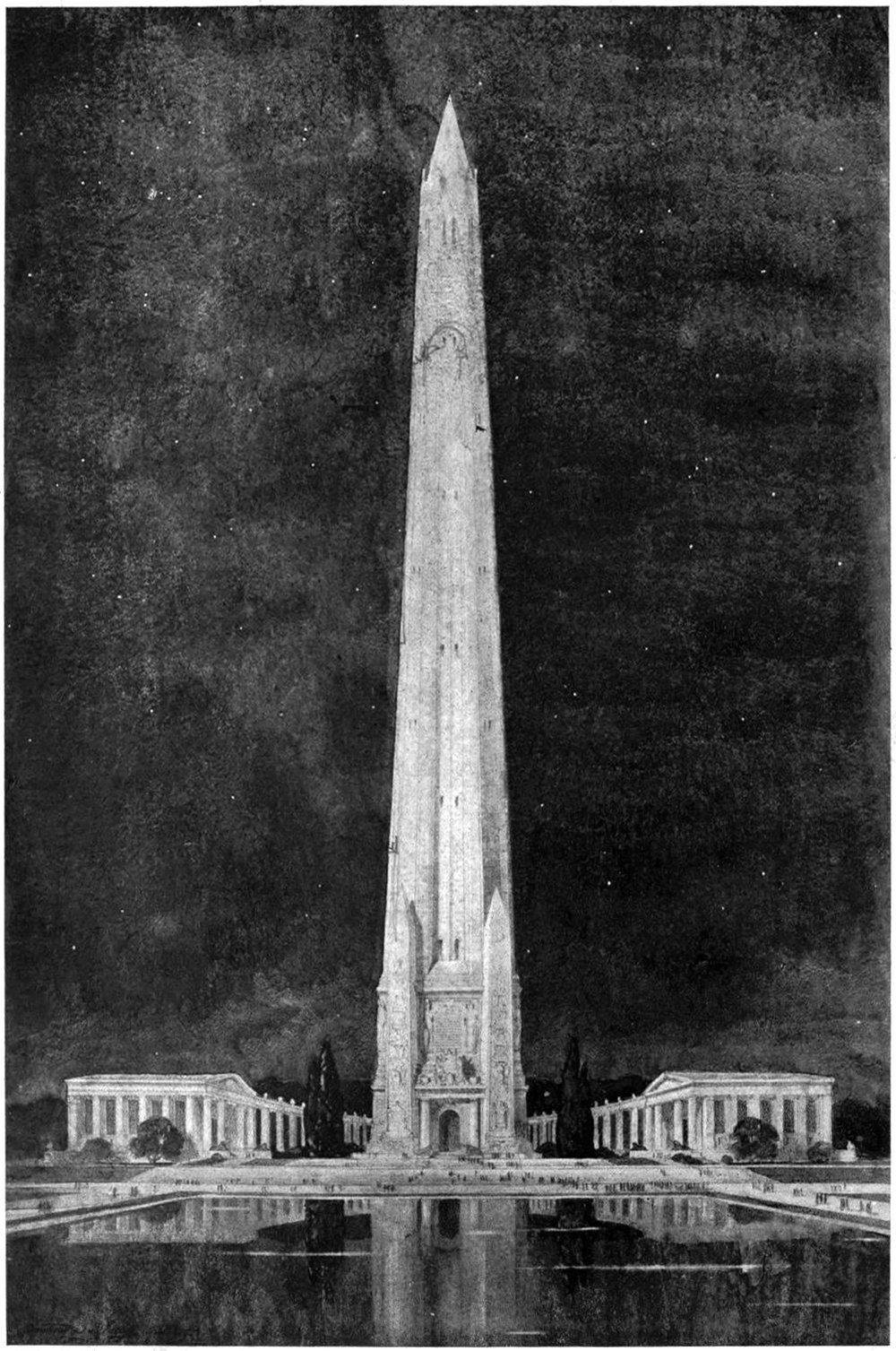A Design for a National Memorial
Rendering by W.T.L. Armstrong showing a Design for a National Monument by Armstrong & De Gelleke Architects. The design features a supertall obelisk surrounded by Greek temples and colonnades.
Monuments and memorials are tricky beasts to design. Unlike a normal building, they’re imbued with meaning and symbolism that can be highly subjective. They’re not just buildings, but repositories for history and memory. This means they carry a responsibility to the person or event they are meant to symbolize. That’s what makes the above illustration so difficult to understand. It’s described only as Design for National Memorial. This is unfortunate, because it doesn’t specify what it’s memorializing. One thing is clear, however; the designer was motivated by verticality.
Let’s unpack what we know. First, this is a national memorial for a site somewhere in New York City. It consists of a massive obelisk tower at the center of a courtyard, surrounded by classical Greek architecture with a reflecting pool at one end. It was designed by Armstrong & De Gelleke Architects. From the looks of it, it’s not directly in the city, but somewhere outside it. This is pretty much it. From this, we can assume the architect is memorializing something civic and historic based on the classical forms used. The mixture of ancient Egyptian (the obelisk) and Classical Greek (the temples and colonnades) styles is a common language for civic structures throughout the US.
Apart from this, what do we have? A massive obelisk that towers over its surroundings, creating a landmark and calling attention to itself. This is a monument that wants everyone to know about it, and it’s using verticality to do it. The arched entrance suggests an interior space at ground level, and the small windows scattered about the shaft suggest the ability to climb to the top. This is all great, but the lack of a subject removes much of its potential. Is it memorializing a past president? A war? American independence? Had the designer specified this, it would carry much more meaning and give the structure a sense of purpose, but instead we’re left with a massive obelisk without much meaning behind it other than its height.
Check out other posts about unbuilt architecture here.

